It was a few years ago now that I was making my first forays into Port Phillip with the hope of landing a few snapper.
That first season was a tough one and whilst I scored a few fish I hardly set the world on fire. There began the quest to know more about these fish, how to locate, tempt and land them. Fishing forums helped as did attending numerous ‘snapper nights’ where the local gurus would talk about how they do it. The biggest steps forward came over the next couple of years where I was helped greatly by some people that have become trusted mates as they helped me solve the snapper catching mysteries – they did this by showing me first hand on the water.
As they say time on the water is the way to learn and that is a fact but just as true however is that so much time on the water can be wasted when you don’t know what you are doing. In the fury of a hot snapper bite this fishing caper can at times appear to be not too hard but until you have learnt the lessons a number of times over, the mistakes still happen and you miss out on fish. This is called learning!
Many new anglers and boat owners are in the same situation I was – having a desire to hunt big red but not too much of a clue how to go about it. The great news for those on the learning curve is that there are now ways to accelerate the process and learnt a lot quicker. A few of the Melbourne pro’s are offering a service to help and the best part is that it’s done on the water in a nice and visual the way we as adults like to learn.
This service called ‘tuition charters’ are designed to help anglers with their piscatorial learning problems. These tuitions have a big difference in their emphasis from a traditional charter; it’s not about the skipper running around doing their best to catch you fish to take home, rather it’s about teaching the anglers how to fish and use their own equipment, it’s about education, teaching a system of fishing and instilling some confidence to go it alone.
It was with great interest that I stepped on board with local snapper guru Matt Cini on Reel Time Charters to follow one of his tuition charters to see how it was done. Matt seems to have no trouble putting his clients onto the fish and has a great reputation as a charter skipper in Victoria.
The leisurely 10.30am start time at Launching Way immediately suggested that this was not about seriously trying to bag fish, which is precisely the intent. The customers were a mixture of new boat owners struggling to get a result on their own right through to some more accomplished and seasoned anglers who perhaps needed to brush up on a finer point or two about sounding techniques or wanted to generally pick Matt’s brain about finding bigger fish.
Heading out the Patterson River in pretty ordinary conditions, Matt went through a well-structured and well delivered spiel on his views on snapper in the bay. The topics covered were numerous and detailed and are an A-Z of the basics and important finer points of snapper fishing in our bay. Plenty of time was devoted to the skippers views on gear selection, baits and berley and even an introduction to fishing soft plastics but some of the more perplexing subjects covered included sounders and sounding, the importance of the right water temperature, moon phase and the barometer and its relationship to wind direction.
Matt doesn’t mind me rehashing some of those details here so take a note!
There is no doubt that plenty of the sea floor in Port Phillip is featureless and at any given moment plenty of areas don’t hold fish even if there is perhaps good ground there. The addition of a sounder to any boat is no longer considered a good investment but a downright necessity; there is not much point dropping baits where there are no fish.
The actual sounders that will give the best results vary in price and configuration and it’s not always the case that the most expensive are best but there is certainly a cost and quality correlation.
Matt detailed that the better the unit the higher performance that will be revealed in difficult fish finder operating situations such as when travelling at speed, and at night when sea lice clutter and noise can make deciphering a sounder image that much harder. He also detailed the importance of understanding what the functions of and adjustments on your unit mean.
The sounder fine-tuning included adjusting the unit to suit the conditions, using split screen, tweaking sensitivity/gain and turning off the dreaded fish identification symbols for optimum performance.
Best of all Matt sounded a few of his marks including reef, shell bank and mud bottoms and he was able to show all what real snapper look like as a sonar image when grouped up tightly, grazing and when on the move as a school. Other topics of note included transducer set up, positioning and tuning.
This part of the tuition I would regard as the most valuable aspect and virtually any angler from novice to experience would gain benefit from it.
Whilst snapper are a year round proposition, the cooler months offer short bite times with fish having a much slower metabolism and reduced need to feed as often. The fish also tend to pick up baits and drop them making them hard to hook. On tuition, Matt revealed that the optimum water temperature for snapper in the bay was between 15-19C when the fish tended to feed much more often and aggressively.
Over about 20C the snapper seem to again bite much less and become preoccupied with their breeding cycle but could still be caught with persistence. Statistically the best snapper bites will occur in the months October to December and then again from March until April as the water cools off again.
Matt maintains that the moon phases play a big part in snapper fishing success but there is no doubt reds can be caught around the month on any moon phase but on some they just seem to bite harder.
He rates the best phase from the new moon to about three days before the full moon when fishing daylight hours while the full moon phase itself to a few days after can be very unpredictable as far as snapper are concerned and can be a frustrating time to target them. This pretty much echoes my experience.
It’s no secret that snapper in shallow water such as Port Phillip are affected by changes in the barometer more so that deep water fish offshore, but deciphering how the fish behave with the various atmospheric pressures and changes is the challenge faced by all and is one learnt over time when keeping a fishing diary.
To help in your thinking, the Reel Time crew advocate that a sudden rise in air pressure after the barometer has been low for a few days is the recipe for hungry fish and a hot bite.
Considerable time was spent on charter discussing wind direction and the effect that this has on the barometer and of course fish behaviour. Matt’s scale of best to worst winds go from south westerly (best), westerly, southerly, north westerly, easterly, south easterly, north easterly and northerly (worst).
Matt detailed that he certainly favours a tide change to bring reds on and his experience is that early season (September and October) the bite will be best early morning, by November the evening bite will be strongest and once the water is very warm around Christmas that tide changes during the day are the key – this kind of experience and assumptions can only come after catching thousands of fish!
So have I given all of Reel Times secrets away? Not likely as this is just a small part of it and listening to the casual comments as you sound-around and the skipper discusses the fishery are worth paying for alone to make you a better angler.
Skill demonstrations such as watching Matt go about his business anchoring are some of the technical aspects that are worth their weight in gold. He very gets the best from all his gear – sounder, plotter and compass to position his boat right ‘on the spot’ where baits will be in front of the fish.
Reel Time offers tuitions usually in the early part of the season but can be at any time if requested. Also on offer are king George whiting and gummy shark tuitions as well over in Western Port during the early months of the year.
Other operators offer similar services as well.
I thoroughly recommend accelerating your learning and make sure you are concentrating on the right things and not learning to repeat your mistakes.
Facts
The author John Cahill paid for his trip aboard Reel Time Charters.
Ring Reel Time to book tuition on 0438302093 or visit www.reeltimefishing.com.au

Now that's a sounder image worth stopping for!

Reel Time putting tuition customer Bill onto his first red after many frustrating trips on his own boat
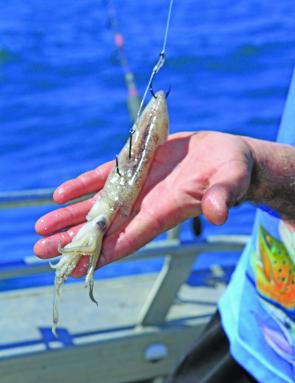
Rigs and bait rigging are covered in detail
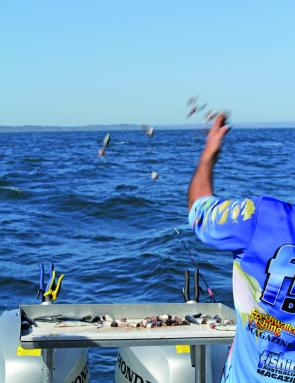
How to berley may seem simple but are you sure you are attracting the fish or pushing them away?
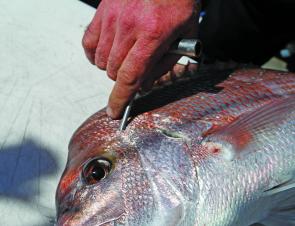
The finer details of caring for your catch if destined for the table such as iki jimi are covered as well
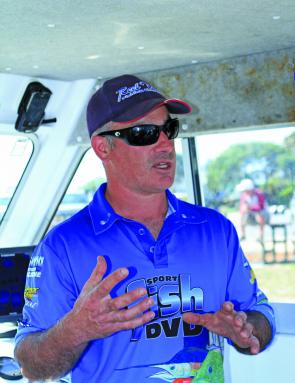
The skipper Matt Cini explaining the finer points of snapper fishing.
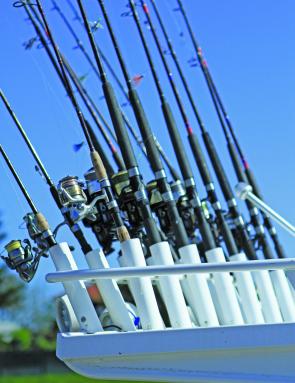
There is no shortage of gear to help demonstrate the finer points.
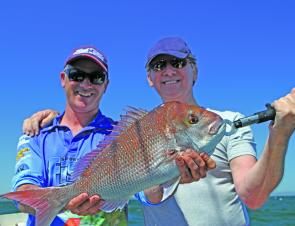
The proof of the pudding is in the eating, or the proof is in the snapper!




